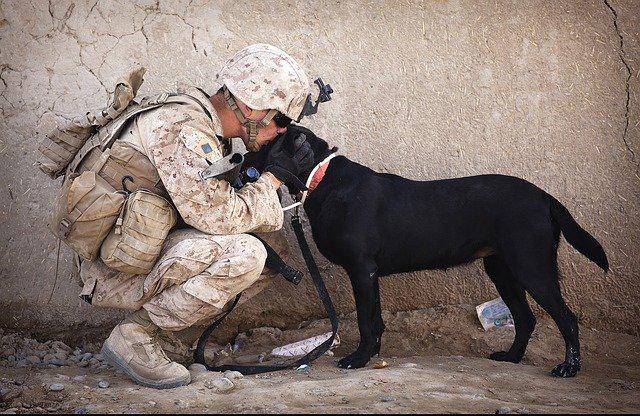
Preparing for your dog’s first litter can be a nerve-wracking prospect. There is nothing more exciting or rewarding than a litter of brand new, healthy puppies, but if you’re new to breeding, then it can be a pretty daunting challenge too. Bringing new life into the world is a big responsibility!
That’s why it’s crucially important you make sure you are well-informed and well-prepared for the impending arrivals. Preparation should start as soon as the pregnancy is confirmed.
-
Check-in With the Vet
The gestation period for a dog is about 58-68 days depending on its breed. Your vet will be able to examine your dam and give you a more accurate due date, along with tips and guidance on how to give her the extra care she will need throughout her pregnancy.
Most canine pregnancies will progress perfectly healthily without you needing to do much at all. Dogs have been doing this for millennia without human assistance after all!
However, your vet will also be able to spot if there are any health issues that you may need to keep a closer eye on. But regular dog grooming will enable you to spot some of the more obvious problems
They will also be able to arrange an ultrasound scan to establish how many puppies you can expect, and arrange prenatal care and shots, a diet plan, and a home visit for a couple of days after the pups have been born.
There are some breeds which require caesarean section delivery, so it’s key that you speak to your vet so that they can advise you if this is the case with your dog.
-
Change the Dog’s Diet
Your dam (pregnant dog) is going to be hungry! Sometimes twice as hungry as she normally is. Dogs require considerably more calories during pregnancy and when nursing, so a different diet will be required. Your vet can give you advice on which food plan is best for your dog.
-
Set Up a Whelping Box
Whelping is the term given to birthing puppies. A whelping box is designed to secure your dog during the birthing process and protect the puppies when they are born. A whelping box should be placed in a quiet corner of the house where your dog can feel safe and comfortable enough to have her litter.
This box could be made of wood, cardboard or plastic, depending on your preference and what you can afford. Whatever the type of box, it must have a height of about 2 feet to prevent puppies from escaping.
Puppies stay in the whelping box until they are about five weeks old, which is why it is necessary to place the box away from bustling activities in the home. Dogs are understandably very protective of their puppies and it’s therefore advisable not to interfere too much with the puppies in the early days – as tempting as it might be!
Importantly, the whelping box should be lined with blankets, towels and a lamp for warmth and heat. It’s a good idea to have the new environment in place several weeks before the due date so your dog can get accustomed to her environment and feel that she can whelp comfortably there.
-
Have Feeding Alternatives for the Puppies
A newborn puppy’s first food should wherever possible, always be mum’s milk as it provides all the nutrition and important antibodies the pups need for protection. Usually, nature will take its course and the puppies will take their first feed within a couple of hours of being born. However, sometimes this doesn’t happen. Mum may be unwell, or the natural process may have been disrupted in some way
If this happens, you will need to step in and feed the puppies using milk alternatives. A milk replacement formula and syringes should be readily available for this purpose.
-
Available Emergency Assistance
No matter how much of an expert you are in the dog breeding and whelping business, you should always have a vet or emergency animal hospital as a back-up. Nature is a wondrous thing but it’s important to have reliable assistance available if an unfortunate incident occurs.
Pay attention to when your dog goes into active labour, keep an eye from a distance without unnecessarily disturbing the process and inform your vet of any unusual or alarming behaviours exhibited by your dog.
Normal labour shouldn’t take longer than 18 hours. However, if labour is not going as planned, you may need to step in and seek help.
Studies have shown that 45% of puppy deaths occur with first-time mum-dogs. So if this is your dog’s first litter, extra vigilance is required along with a bit more reassurance for your nervous first-time mum.
After the puppies have been born, monitor them carefully and check the puppies have had their first feed within the first few hours of being born.
Finally, relax. Bringing a litter of puppies into the world can seem like an overwhelming responsibility but with a bit of preparation and good experienced help at hand, it is a truly amazing privilege and experience!